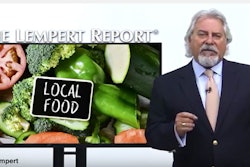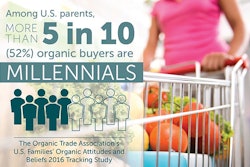ROCKVILLE, Md., Nov. 21, 2016 (PRNewswire) — The new golden rule in the U.S. food industry: "An informed consumer is a satisfied consumer." This extends not just to the information printed on labels for products such as frozen or shelf-stable foods, but also increasingly includes fresh meat and poultry sold both at retail and featured on foodservice menus, according to market research firm Packaged Facts in the report Meat, Poultry and Seafood: Restaurant Trends and Opportunities.
"Perhaps more than ever before, consumers want to know about what's in their meat and poultry, how it was raised and where it came from. This need to know taps a breadth of concerns related to food healthfulness and sustainable practices," says David Sprinkle, research director, Packaged Facts.
For many consumers, choosing a meat and poultry dish revolves around keeping it real: they seek all-natural choices that reflect their desire to keep human intervention they perceive as negative out of the process. Packaged Facts' survey data reveals that more than 6 in 10 restaurant meat and poultry eaters say that "all natural" is important to them when selecting meat/poultry dishes at a restaurant.
Animal welfare and sustainability also play a role in their decision, as does how the animal is fed—grass or vegetarian, for example. In this respect, consumers are likely weighing the effect of feeding choice on the quality, taste and healthfulness of the dish.
And local is more important than ever. The percentage of consumers who make an extra effort to buy local should crack 50% within the next couple of years, in the face of widening concerns about where food comes from.
But in the era of global supply chains, local is also relative: the United States serves as its consumers' backyard. Everything from trout to berries to steaks now comes from the far corners of the world to the local supermarket or restaurant, which can bring a litany of questions and concerns to U.S. consumers lips—and helps explain why meat and poultry from America's own backyard wins hands down.
In this regard, touting "grown in the U.S.A." is not only about patriotism and jobs—it goes to the heart of consumers' concerns about food quality and safety. A pessimist could argue, "better the Devil you know than the Devil you don't"; an optimist could argue that the U.S. is renowned around the world for quality control and strong, consistent food regulation that is hard to beat on a global stage. In either case, U.S. meat and poultry providers should make their homegrown advantage loud and clear on their packaging.
For more information on Meat, Poultry and Seafood: Restaurant Trends and Opportunities visit: http://www.packagedfacts.com/Meat-Poultry-Seafood-10096197/.
About Packaged Facts
Packaged Facts, a division of MarketResearch.com, publishes market intelligence on a wide range of consumer market topics, including consumer demographics and shopper insights, consumer financial products and services, consumer goods and retailing, consumer packaged goods, and pet products and services. Packaged Facts also offers a full range of custom research services. Reports can be purchased at our company website and are also available through MarketResearch.com.






















